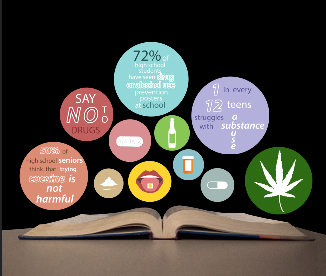Editorial: Raise student substance abuse awareness
The Voice of the Epic

December 7, 2017
Lighting up during school hours and drinking prior to school events are activities that are occasionally pursued by Lynbrook student body. While trends in drug and alcohol abuse at a school like Lynbrook are ever-changing, a stronger substance abuse education program is needed to increase awareness and improve overall student wellness. A supplementary program, including a public speaker event, should also be ready in the event that a particular school year requires more attention due to a greater number of drug or alcohol related incidents.
“We always have to weigh if substance abuse is a problem,” said Student Conduct Liaison Jose Ramirez. “That is a fluid question that has to be asked every single time because it could be yes at any time. So a plan should always be available.”
The Fremont Union High School District currently has a program in place for students who are caught possessing drugs at school. These students must attend district-mandated classes to reflect on their behavior. Often, they are also required to attend additional therapy sessions.
Lynbrook’s only current schoolwide education on drugs and alcohol is given during a student’s freshman year PE class. The curriculum, provided by the San Jose Police Department (SJPD), broadly covers substance abuse, with an emphasis on real life consequences. Drugs and alcohol are also briefly touched upon in the zero-tolerance presentations given by the assistant principals each year. Many, however, view the programs as unsuccessful in preventing substance abuse incidents.
“I don’t think [the program] is effective because the program doesn’t target people who need to hear it most,” said senior Alanna Zhou. “Drugs only become prevalent in the upperclassmen and by this time everyone’s already forgotten about what was said [in freshman year].”
Although Lynbrook has much fewer substance abuse problems than most schools, room for improvement remains. Current procedures for dealing with substance cases focus on a responsive rather than preventative approach. By increasing on-campus awareness of substance abuse, students will not need to go through the district program in the first place.
Thus, the current program should be revamped to include more discussion of personal experiences, both through open forum within the current SJPD class and exposure to videos of people who have dealt with the repercussions of addiction. The program should also be formatted less like a class and more like a safe space to ask questions.
In addition, small changes can be implemented to further students’ awareness of the effects of taking drugs or drinking alcohol. Pamphlets should be made accessible in places like the library and office so that students can learn more about substance-related issues and who they can contact in the event that they need help beyond what is discussed during the SJPD class. Posters with similar information can also be hung on the many bulletin boards around campus.
Presently, administration immediately evaluates incoming freshmen on their inclination toward using drugs and alcohol by inquiring with their middle schools and making a point to get to know them. In addition to improving the the standard substance education program, the school should prepare a supplementary program ready to be implemented in the event that one year’s evaluation indicates the necessity for more involvement.
The additional program would have speakers talk to students about their personal experiences with addiction and the ensuing consequences, which would allow students to better visualize the negative consequences that rise from substance abuse.
“Lynbrook has a fairly low number of drug and alcohol cases that are caught or brought to our attention,” said Assistant Principal Eric Wong. “That is not to say we’re blind to the fact that [substance abuse] is happening or that some of our students are using [drugs and alcohol]. I do think one of the differences here [compared to other schools] is that our students, for the most part, choose to not do it on campus.”
Improving the way Lynbrook handles drug and alcohol education is crucial. In order to do so, it is necessary to implement a updated substance abuse education program, create an additional program for problem years, educate parents and provide more informational tools. Doing so will not only spark important conversations about substance use between students, but also lead to a healthier Lynbrook.


























































